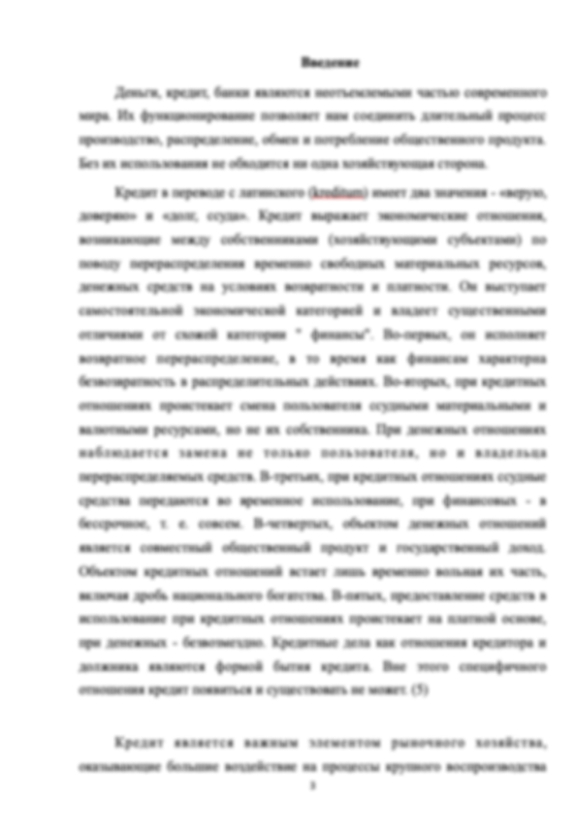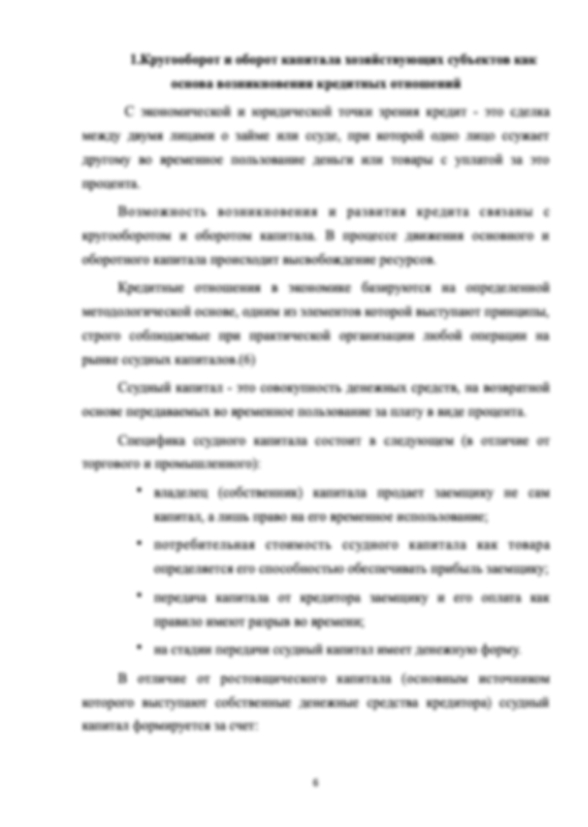Хорошо.
Информация о работе
Подробнее о работе

Перевод статьи, название: The value of motivation
- 11 страниц
- 2021 год
- 0 просмотров
- 0 покупок
Гарантия сервиса Автор24
Уникальность не ниже 50%
Фрагменты работ
Пример перевода первого абзаца:
«Если работать так весело, почему богатые люди не работают?» - шутил комик Граучо Маркс. Но богатые действительно работают - Билл Гейтс не заработал свои миллиарды, играя в компьютерные игры. И даже рабочие могут веселиться, если менеджеры приложат усилия для их мотивации.
“If work is such fun, how come the rich don’t do it?” quipped comedian Groucho Marx. Well, the rich do work—Bill Gates didn’t make his billions playing computer games. And workers can have fun, if managers make the effort to motivate them.
It’s difficult to overstate the importance of workers’ job satisfaction. Happy workers usually lead to happy customers, and happy customers lead to successful businesses. On the other hand, unhappy workers are likely to leave. When that happens, the company usually loses more than an experienced employee. It can also lose the equivalent of 6 to 18 months’ salary to cover the costs of recruiting and training a replacement. The “soft” costs of losing employees are even greater: loss of intellectual capital, decreased morale of remaining workers, increased employee stress, decreased customer service, interrupted product development, and a poor reputation.
While it is costly to recruit and train new workers, it’s also expensive to retain those who are disengaged. The word engagement is used to describe employees’ level of motivation, passion, and commitment. Engaged employees work with passion and feel a connection to their company. Disengaged workers have essentially checked out; they plod through their day putting in time, but not energy. Not only do they act out their unhappiness at work, but disengaged employees undermine the efforts of engaged co-workers. A Gallup survey estimated that the lower productivity of actively disengaged workers costs the U.S. economy between $450 to $550 billion a year.
Motivating the right people to join the organization and stay with it is a key function of managers. Top-performing managers are usually surrounded by top-performing employees. It is no coincidence that geese fly faster in formation than alone. Although the desire to perform well ultimately comes from within, good managers stimulate people and bring out their natural drive to do a good job. People are willing to work, and work hard, if they feel their work makes a difference and is appreciated.
People are motivated by a variety of things, such as recognition, accomplishment, and status. An intrinsic reward is the personal satisfaction you feel when you perform well and complete goals. The belief that your work makes a significant contribution to the organization or to society is a form of intrinsic reward. An extrinsic reward is given to you by someone else as recognition for good work. Pay increases, praise, and promotions are extrinsic rewards.
This chapter will help you understand the concepts, theories, and practice of motivation. We begin with a look at some traditional theories of motivation. Why should you bother to know about these theories? Because sometimes “new” approaches aren’t really new; variations of them have been tried in the past. Knowing what has gone before will help you see what has worked and what hasn’t. First, we discuss the Hawthorne studies because they created a new interest in worker satisfaction and motivation. Then we look at some assumptions about employees that come from the traditional theorists. You will see the names of these theorists over and over in business literature and future courses: Taylor, Mayo, Maslow, Herzberg, and McGregor. Finally, we’ll introduce modern motivation theories and show you how managers apply them.
Frederick Taylor: The Father of Scientific Management
Several 19th-century thinkers presented management principles, but not until the early 20th century did any work with lasting implications appear. The Principles of Scientific Management was written by U.S. efficiency engineer Frederick Taylor and published in 1911, earning Taylor the title “father of scientific management.” Taylor’s goal was to increase worker productivity to benefit both the firm and the worker. The solution, he thought, was to scientifically study the most efficient ways to do things, determine the one “best way” to perform each task, and then teach people those methods. This approach became known as scientific management. Three elements were basic to Taylor’s approach: time, methods, and rules of work. His most important tools were observation and the stopwatch. Taylor’s thinking lies behind today’s measures of how many burgers McDonald’s expects its cooks to flip.
A classic Taylor story describes his study of men shoveling rice, coal, and iron ore with the same type of shovel. Believing different materials called for different shovels, he proceeded to invent a wide variety of sizes and shapes of shovels and, stopwatch in hand, measured output over time in what were called time- motion studies. These were studies of the tasks performed in a job and the time needed for each. Sure enough, an average per- son could shovel 25 to 35 tons more per day using the most efficient motions and the proper shovel. This finding led to time-motion studies of virtually every factory job. As researchers determined the most efficient ways of doing things, efficiency became the standard for setting goals.
Taylor’s scientific management became the dominant strategy for improving productivity in the early 1900s. One follower of Taylor was Henry L. Gantt, who developed charts by which managers plotted the work of employees a day in advance down to the smallest detail. U.S. engineers Frank and Lillian Gilbreth used Taylor’s ideas in a three-year study of bricklaying. They developed the principle of motion economy, showing how every job could be broken into a series of elementary motions called a therblig (Gilbreth spelled backward with the t and h transposed). They then analyzed each motion to make it more efficient.
Scientific management viewed people largely as machines that needed to be properly programmed. There was little concern for the psychological or human aspects of work. Taylor believed that workers would perform at a high level of effectiveness—that is, be motivated—if they received high enough pay.
Some of Taylor’s ideas are still in use. Some companies continue to emphasize conformity to work rules rather than creativity, flexibility, and responsiveness. For example, United Parcel Service (UPS) tells drivers how to get out of their trucks (with right foot first), how fast to walk (three feet per second), how many packages to pick up and deliver a day (an average of 400), and how to hold their keys (teeth up, third finger). Drivers wear ring scanners, electronic devices on their index fingers wired to a small computer on their wrists. The devices shoot a pattern of photons at a bar code on a package to let a customer check the Internet and know exactly where a package is at any given moment. If a driver is considered slow, a supervisor rides along, prod- ding the driver with stopwatches and clipboards. UPS has a training center in Landover, Maryland, with simulators that teach employees how to properly lift and load boxes, drive their trucks proficiently, and even lessen the risk of slipping and falling when carrying a package.
The benefits of relying on workers to come up with solutions to productivity problems have long been recognized, as we shall discover next.
Elton Mayo and the Hawthorne Studies
One study, inspired by Frederick Taylor’s research, began at the Western Electric Company’s Hawthorne plant in Cicero, Illinois, in 1927 and ended six years later. Let’s see why it is one of the major studies in management literature.
Elton Mayo and his colleagues from Harvard University came to the Hawthorne plant to test the degree of lighting associated with optimum productivity. In this respect, their study was a traditional scientific management study. The idea was to keep records of the workers’ productivity under different levels of illumination. But the initial experiments revealed what seemed to be a problem. The researchers had expected productivity to fall as the lighting was dimmed. Yet the experimental group’s productivity went up regardless of whether the lighting was bright or dim, and even when it was reduced to about the level of moonlight.
In a second series of 13 experiments, a separate test room was set up where researchers could manipulate temperature, humidity, and other environmental factors. Productivity went up each time; in fact, it increased by 50 percent overall. When the experimenters repeated the original conditions (expecting productivity to fall to original levels), productivity increased yet again. The experiments were considered a total failure at this point. No matter what the experimenters did, productivity went up. What was causing the increase?
In the end, Mayo guessed that some human or psychological factor was at play. He and his colleagues interviewed the workers, asking about their feelings and attitudes toward the experiment. The answers began a profound change in management thinking that still has repercussions today. Here is what the researchers concluded:
The workers in the test room thought of themselves as a social group. The atmosphere was informal, they could talk freely, and they interacted regularly with their supervisors and the experimenters. They felt special and worked hard to stay in the group. This motivated them.
The workers were included in planning the experiments. For example, they rejected one kind of pay schedule and recommended another, which was adopted. They believed their ideas were respected and felt engaged in managerial decision making. This, too, motivated them.
No matter the physical conditions, the workers enjoyed the atmosphere of their special room and the additional pay for being more productive. Job satisfaction increased dramatically.
Researchers now use the term Hawthorne effect to refer to people’s tendency to behave differently when they know they’re being studied. The Hawthorne study’s results encouraged researchers to study human motivation and the managerial styles that lead to higher productivity. Research emphasis shifted from Taylor’s scientific management toward Mayo’s new human-based management.
Mayo’s findings led to completely new assumptions about employees. One was that pay is not the only motivator. In fact, money was found to be a relatively ineffective motivator. New assumptions led to many theories about the human side of motivation. One of the best-known motivation theorists was Abraham Maslow, whose work we discuss next.
Перевод данной статьи под названием "The value of motivation" был выполнен квалифицированным и дипломированным переводчиком в 2021 году.
Форма заказа новой работы
Не подошла эта работа?
Закажи новую работу, сделанную по твоим требованиям


